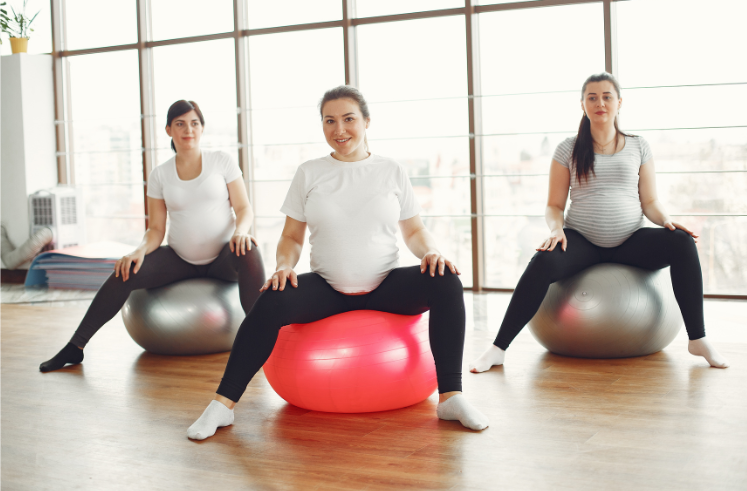
From Bump to Baby: Navigating Extreme Heat as an Expecting Mother and Beyond
By Ashley Williams, Press Secretary for the California Office of Community Partnerships and Strategic Communications
I’ve always loved summertime, but this year feels different for me now that I’m expecting during a year when California is experiencing record-hot temperatures.
As a soon-to-be mom navigating her first pregnancy, extreme heat has taken on new meaning. I’ve come to understand that I’m at greater risk during extreme heat events. And now, beyond the normal preparations for my first child, my days are filled with thoughts about how I can best protect my growing family.
Staying healthy while expecting can be challenging and warmer weather is just one extra thing to worry about. Sometimes we forget that pregnant people are more vulnerable to the impacts of extreme heat because carrying children disrupts the body’s ability to regulate sudden changes in temperature. Knowing how to navigate extreme heat while expecting can be tough, which and is definitely true for me. Once I feel overheated, I’ve discovered that it takes me much longer to cool back down. However, I have found ways to manage these changes by developing a plan to ensure my well-being.
I started by switching things up to fit the evolving needs of my growing child. Now I keep an extra vigilant eye on weather forecasts and heat advisories. When I’m out and about, you can find me in the shade and in loose, lightweight clothing.
My walks happen during the cooler hours of the day, usually in the mornings, or I exercise in environments with air conditioning or that prioritize comfort and safety such as at home in my living room. My spouse and I made sure to learn the signs of heat exhaustion, which include heavy sweating, weakness, dizziness, nausea, and headaches. It helps to have someone else nearby who is aware and can help spot the signs of heat illness. Lastly, I always have a bottle of water by my side to stay hydrated and a damp towel for a quick cool-down to help prevent heat illness symptoms.
As I look forward to welcoming my child into the world and embracing motherhood, I’ve also taken proactive steps to better understand the impacts of extreme heat on young children, particularly those ages 0-4 years old. After becoming pregnant, I learned that infants and children don’t sweat like adults do, reducing their ability to cool down on their own. And since infants can’t tell us why they’re uncomfortable, it’ll be my responsibility to watch for any signs of heat illness. Signs to look for in young children include less urine, no tears when crying, dry or sticky mouth, crankiness, and fatigue.
I also understand the need to be hyper-vigilant about car safety. Once I learned that temperatures in a parked car can rise almost 20 degrees in minutes, I decided that there’s absolutely no way I will ever leave my child in the car unattended, even for a quick stop with the window cracked open. The risk is simply not worth it.
I recognize that as my child grows, I’ll need to continue being an observant and engaged parent, but that this journey won’t be taken alone. It requires a village and will involve the child’s future doctors, teachers, and coaches. By understanding all the strategies for handling extreme heat and integrating them into my child’s daily experiences along with my own, I can help ensure a balanced and safe environment.
The reality is that extreme heat is becoming more common, so everyone must understand how to assess their risk for heat-related illnesses and take the proper precautions to keep themselves and their families safer from extreme heat. As my personal journey has shown, expectant mothers and families with young children must be on top of it. I strongly encourage everyone to visit HeatReadyCA.com, available in 12 languages, to create a personalized extreme heat plan that fits their unique needs to create a safer environment for ourselves and our vulnerable loved ones. Together, we can build a heat-resilient, healthy community.
從准媽媽到寶媽:如何在懷孕前後應對酷暑
撰稿人:加利福尼亞社區合作夥伴與戰略傳播辦公室新聞秘書 Ashley Williams
我一直喜愛夏天,但今年對我來說感覺有所不同。我懷著寶寶之時,加利福尼亞卻正在經受著創紀錄的高溫天氣。
作為首次懷孕的准媽媽,酷暑對我來說有了新的意義。我逐漸瞭解到,在酷暑天氣中,我面臨著更大的風險。而現在,除了為迎接我的第一個孩子做正常準備之外,我每天都在思考要如何最好地保護自己不斷壯大的家庭。
懷孕期間保持健康可能會很具挑戰性,而更炎熱的天氣又是一件需要額外擔心的事情。有時我們忘記了懷孕的人更容易受到酷暑影響,因為懷孕會干擾身體在溫度突然變化時的調節能力。知道懷孕期間要如何應對酷暑可能會很困難,並且對我來說也確實是如此。感到過熱後,我發現自己需要更長的時間才能涼快下來。然而,我找到了應對這些變化的方法,並制定了計畫來保證自己的健康。
我從做出各種調整開始,來滿足日益成長的孩子的需求。現在,我格外關注天氣預報和高溫警告。當我外出時,你可以看到我待在陰涼處並身著寬鬆、輕便的衣服。
我在一天中較涼爽的時段散步——通常是早晨,或者在有空調的場所鍛煉,或者注重選擇舒適和安全的地方——比如家中客廳。我和我的配偶都確保自己瞭解熱衰竭的症狀,其中包括:大量出汗、虛弱、頭暈、噁心和頭痛。有人陪伴並能幫助察覺熱病的跡象是很有幫助的。最後,為了幫助預防熱病症狀,我總是隨身攜帶一瓶水來保持水分攝入充足,還有一塊濕毛巾來迅速降溫。
當我期待著迎接我的孩子降臨到這個世界並成為一名母親之時,我也積極地去學習以更好瞭解酷暑對嬰幼兒的影響——尤其是0-4歲的孩子。懷孕後,我瞭解到嬰兒和幼兒的出汗方式不同于成人,所以自我降溫能力較低。由於嬰兒無法告訴我們他們為什麼不舒服,所以我有責任密切注意熱病症狀。應注意觀察的幼兒熱病症狀包括:尿量減少、哭泣時沒有眼淚、口幹或口粘、躁怒和疲勞。
我也明白了對車輛安全需要格外警惕。瞭解到停泊車內的溫度可以在幾分鐘內升高近20度後,我就決定絕對不能讓我的孩子獨自留在車裡,哪怕只是短暫停車並窗戶微開。這個險絕對不值得冒。
我認識到隨著孩子的成長,我需要繼續保持警覺並做一名積極參與孩子生活的家長。但是,在育兒的道路上我也不是單槍匹馬。孩子成長需要很多人的支持,其中就包括孩子未來的醫生、老師和教練。通過瞭解應對酷暑的所有策略,並將它們融入到孩子和我自己的日常生活中,我就可以幫助確保孩子有一個均衡發展的安全環境。
現實是:酷暑正在變得更加常見。因此每個人都必須瞭解如何評估自己患熱相關疾病的風險,並採取適當的措施為自己和家人更好預防酷暑。以我的個人經歷為鑒,准媽媽和有幼兒的家庭必須時刻保持警覺。我強烈鼓勵所有人都去訪問HeatReadyCA.com(該網站提供12種語言版本),以創建一個適合他們獨特需求的個性化酷暑應對方案,並為我們自己和易受酷暑影響的親人們營造一個更安全的環境。齊心協力,我們就可以打造一個能夠抵禦高溫的健康社區。
